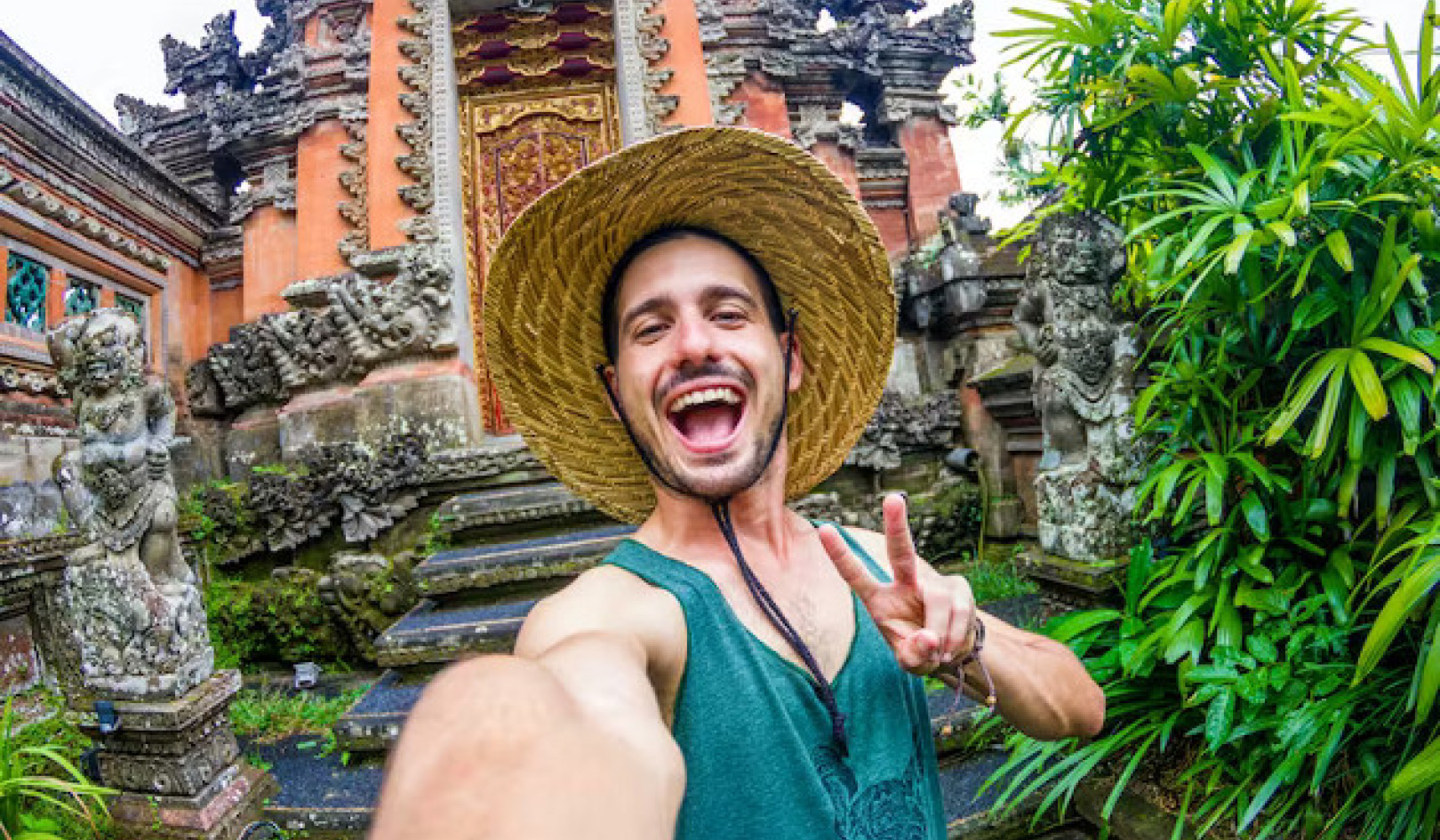
Just as archers fix their gaze upon a distant target before loosing the strings of their bows and sending their arrows flying, so do lovers of God fix their gaze on the face of God, each releasing the soul so it too can fly toward its target where it celebrates its homecoming.
All spiritual paths teach us that if we want to find God, then we need to turn directly toward God, come face-to-face with the energies of the Divine, and then surrender to whatever begins to occur as a result of the impact that such an encounter creates in our lives. But where do we turn? And where exactly is it that we find the face of the Divine? Is it everywhere? Or in one particular location only? And can perhaps a particular location, a particular face, serve as the doorway to the face of God?
One way to look upon the face of God is to create an image of God, either a painting or a sculpture, and then gaze at the image for an extended period of time. This practice can be found in the Greek Orthodox Church where icons of saints and personages from the Bible are the only companions that monks and nuns take with them into the isolation of their cells during long periods of retreat.
When one fixes his or her entire attention on these images over long hours and days, the images may come to life and enter into animated dialogue with the practitioner. Many devout Hindus create personal shrines in their homes and temples in which images of a god or goddess serve as the means for personal dialogue with the Divine. It is said that the eyes of these images are the most important of all the facial features, for by creating eye contact with the image a devotee achieves darshan, a sanskrit word meaning "seeing and being seen by God."
Miniature Reflections of God
Most of our spiritual traditions tell us that, as humans, we are miniature reflections of God and that we have been created in God's image. If this is so, then it would follow that a more direct way to look upon the face of God would be to sit and gaze at an actual person, a real flesh-and-blood human. If he or she will sit and hold your gaze in return, something begins to transpire between the two of you. If you can truly see another and be seen by the other, you begin to see that he or she is an embodiment of the Divine, and you begin to feel that you are as well.
In India, darshan often occurs in formal settings between teachers and their students. Teachers may sit at the front of a room, perhaps on a slightly raised dais so that no one's view will be obstructed. They may sit silently, pouring out their gazing, inviting students to meet their eyes and to hold contact with their gaze. This contact allows the Divine to enter their students' awareness. In the words of Ramana Maharshi, one of the great Indian teachers of the twentieth century and one of the great givers of darshan, "When the eyes of the student meet the gaze of the teacher, words of instruction are no longer necessary."
Why gazing at another person and having him or her hold your gaze in return can open both participants to a direct experience of the Divine is a mystery. All of us, whether we're consciously aware of it or not, know about this practice from a very early age. School children will often enter into staring contests during which their conventional experience of self is momentarily suspended to accommodate the new and unusual energies that the visual contact between them generates. A common response to the dramatic shift in awareness that prolonged eye contact triggers is to burst into laughter, and so the contest ends with both of the children being the true winners, with smiles on their faces.
Avoiding Eye Contact Creates Separation
As we mature and need to become strong individuals, separate from the whole, we tend to avoid eye contact when we speak to others, for if we did hold the other's gaze we might find it difficult to remain focused on the information that we're trying to convey, melting instead into a shared sense of wordless union with the person to whom we're speaking. Only when real love forms the basis of our communication with another do we find it more natural to hold and soften into our partner's gaze.
Because the eyes are universally acknowledged to be the windows to the soul, when we hold the gaze of another, we hold and cradle his or her soul. This most intimate of acts is reserved as a privilege for people who love and trust one another. Newborn children are natural adepts at the practice and are often able to draw their parents into gazing at them for long periods of time.
People newly in love may find that they automatically fall into gazing at each other as a natural expression of the love that they feel. In fact, this unintentional and spontaneous dissolving into the eyes of the other is often the signal that, at long last, they have finally found the beloved for whom they've been searching. When describing this newfound love, people will often rejoice that, finally, they have met someone who truly sees them as they are.
Dissolving the Barriers
When eye contact between two people is initiated and maintained, an invisible energetic circuit is established between the two participants, dissolving the barriers that ordinarily separate them from each other, drawing them ever closer into a shared awareness of union. This experience of union is always pervaded by the feeling tone of love, just as the experience of separation from others, as well as from the larger world we inhabit, tends to breed feelings of fear and alienation.
However, we live in a culture that worships the individual and that is embarrassed by joint forays into the Divine, into the great ground of being that is our heritage and true birthright as humans on this planet. In our culture, this most natural of actions, the holding of the gaze between two people, is taboo. And, yet, how tragic it is that we turn away from this heritage, forfeiting our birthright in an act of fear.
To See And To Be Seen
In the area of Vancouver Island on which I live, the elders of the Cowichan tribe speak of the "disease of the eye." They describe this condition as what occurs when we're walking down the road and avert our gaze when we pass by other humans instead of looking at them directly in the eye, acknowledging them as God's noble creatures, seeing them and being seen by them. This act of aversion is seen as a turning away from a moment of grace and, ultimately, constitutes a turning away not just from the other person, but from ourselves as well, for the blessings of holding the gaze of other humans cure the disease of the eye and leave us feeling whole.
Isn't it true that, if we happen to look into the eyes of a stranger at the same moment the stranger is looking into ours, we'll usually avert our gaze? Our fear won't permit us to maintain the contact that our interest in each other has spawned. By choosing fear in this way, we perpetuate our notions of separation and exclusion and continue on our way.
If we're able to look into another person's eyes and hold his or her gaze, however, a whole other set of conclusions reveals itself. In just a few minutes' time our conventional boundaries begin to soften, losing their hard edge of distinction and opacity. The energy fields of our bodies, which people with particularly sensitive vision can perceive as auras, slowly begin to merge, the one flowing into and out of the other.
Deepening the Connection and Communication
Once this connection has been established, our communication deepens, and the feeling tone of the encounter begins to shift dramatically. Like two objects that have entered into a whirlpool and are together drawn down inexorably to its common source, our experiences of our personal self and of the other gradually merge and, at a very deep level, may even become indistinguishable. We enter into darshan together. Like iron filings being drawn to a powerful magnetic source, we experience ourselves as being ineluctably drawn closer to a shared feeling of union, relatedness, and love.
Where formerly we were two separate beings, we join together through the practice and become something that neither of us could quite be on our own. When hydrogen comes into the presence of oxygen, suddenly there's water. Likewise, through such a meeting, two people lose their sense of separateness and drown together in the waters of love and union.
Looking into another's eyes and holding his or her gaze need not be just a pastime of schoolchildren or the privilege of new lovers or parents of newborns. It represents a practice capable of taking the participants to the deepest feelings and the purest awareness of self that are available to a human being. Some would call this pure awareness God, and down through the ages this practice has spontaneously appeared and reappeared wherever lovers of God, lovers of the ultimate source of their own being, have come together and truly met one another.
The quintessential Hindu lovers, Radha and Krishna, are often depicted as sitting silently, raptly gazing at each other, surrounded by a luminous glow for all to see. Is the light that surrounds their bodies a function of their high spiritual station, or could it be the natural result of a love that leaves them no option but to gaze at each other with adoration?
Eye Gazing as a Path to Spiritual Realization
More recently, a number of modern spiritual teachers have incorporated eye gazing into the body of their practices as a direct means to attain realization of the most profound spiritual truths that, all too often, remain obscured from our vision. Oscar Ichazo, a Chilean-born Sufi teacher, has developed a practice called traspasso, in which students sit across from each other and hold each other's gaze.
The teachings of tantra that are proliferating in the West often include periods of eye gazing between the couple who are entering into the tantric ritual. Another story comes out of the tradition of Zen Buddhism. During the long sesshins, or practice periods, participants may meditate for up to sixteen hours a day for as much as a week at a time or longer. It is customary for the students to enter into the zendo in single file, walk around its perimeter until they come to a cushion that is placed on the floor, sit down on the cushion with their backs to the center of the room, facing the wall, and begin their meditation. In this way, a ring of students lines the circumference of the meditation hall with their backs to one another.
One day, however, a Japanese teacher decided to experiment with the format and instructed everyone to turn around, away from the wall, and sit facing the center of the room. Thus, the students naturally encountered the gaze of other students sitting directly across the room from them, and the teacher observed that spiritual realization began occurring much more rapidly through this kind of direct human connection. Joko Beck, a contemporary Zen teacher, includes periods of eye gazing in her sessions.
The Awakening of Rumi
For me, however, the most extraordinary account of the practice of eye gazing can be traced to the meeting that occurred in Konya, Turkey, in 1244 between the renowned poet, Sufi teacher, and originator of the dance of the whirling dervish, Jalaluddin Rumi, and a wandering seeker named Shams-i Tabriz.
Out of the explosion that occurred through Rumi's encounter with Shams, Rumi began spontaneously writing some of the most splendorous poetry about the soul's return to God that has ever been composed, and his writings are voluminous. If you read the poetry with an eye to the practices that will be presented in this book [Rumi -- Gazing at the Beloved], you quickly realize that allusions to the practice of gazing at the beloved -- and even explicit instructions and descriptions of it -- are everywhere.
These clues trail through Rumi's poetry and discourses like shiny pebbles that we drop along an unmarked path in a forest to help us find our way back home. Indeed, the practice of gazing at the beloved truly signals a great homecoming for the participants who are fortunate enough to have found one another.
Some mysteries are like puzzles or riddles that the discerning eye and mind can recognize, unravel, piece together, and then solve. Other mysteries (as the mystery of dying into love) are simply to be entered into, marveled over, and surrendered to with no hope whatsoever of ever conquering or solving them. In fact, the only way of truly understanding such a mystery is instead through letting ourselves be completely conquered and dissolved by it.
Reprinted with permission of the publisher,
Inner Traditions Intl. ©2003.
http://www.innertraditions.com
Article Source:
Rumi: Gazing at the Beloved: The Radical Practice of Beholding the Divine
by Will Johnson.
 Reveals the esoteric techniques of achieving divine Union based on the practices of the Sufi poet Rumi and his mysterious spiritual companion Shams-i-Tabriz. Reveals the actual practices that transformed Rumi from a conventional Islamic scholar into the mystical poet who originated the dance of the whirling dervish. Demonstrates how anyone can achieve similar states of ecstatic divine Union through the simple practice of intentional gazing. Interweaves the poetry and writings of Rumi to document this radical practice.
Reveals the esoteric techniques of achieving divine Union based on the practices of the Sufi poet Rumi and his mysterious spiritual companion Shams-i-Tabriz. Reveals the actual practices that transformed Rumi from a conventional Islamic scholar into the mystical poet who originated the dance of the whirling dervish. Demonstrates how anyone can achieve similar states of ecstatic divine Union through the simple practice of intentional gazing. Interweaves the poetry and writings of Rumi to document this radical practice.
Click here for more info and/or to order this book.
About the Author

WILL JOHNSON is the founder and director of the Institute for Embodiment Training, which combines Western somatic practices with Eastern meditation techniques. He is the author of Balance of Body, Balance of Mind; The Posture of Meditation; and Aligned, Relaxed, Resilient: The Physical Foundations of Mindfulness. He lives in British Columbia, Canada. Visit his website at http://www.embodiment.net.
Books by this Author
at InnerSelf Market and Amazon




























